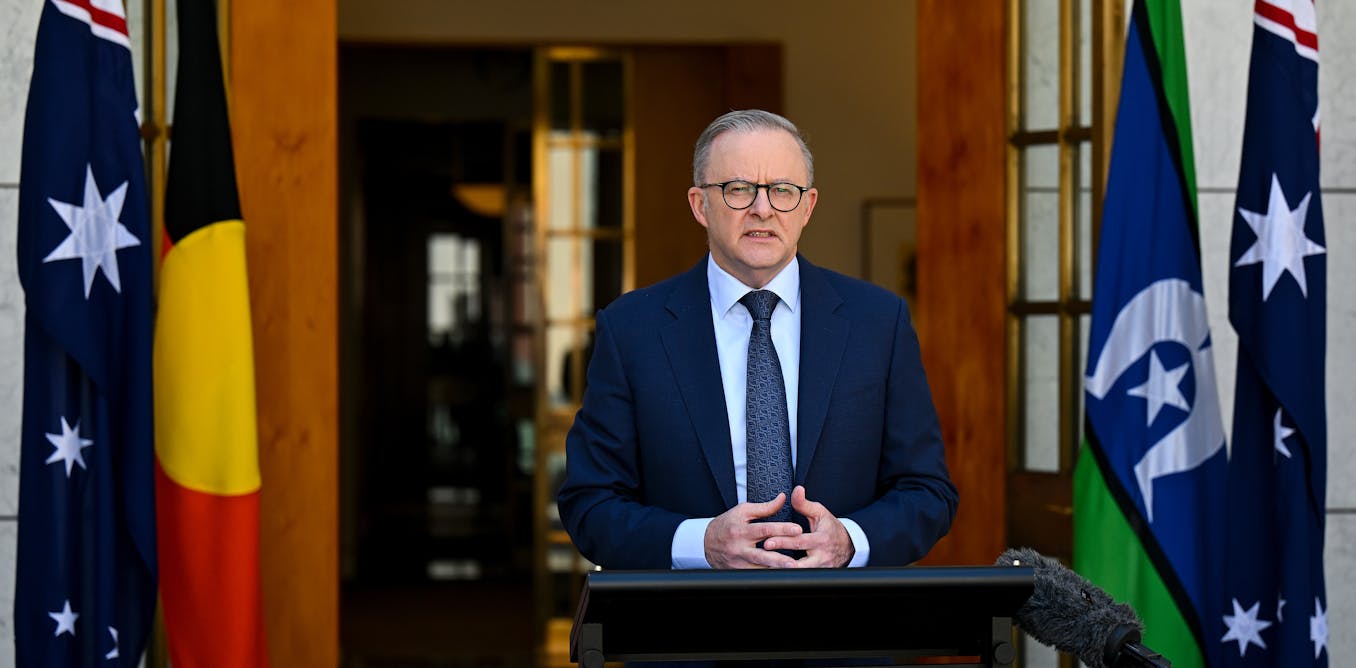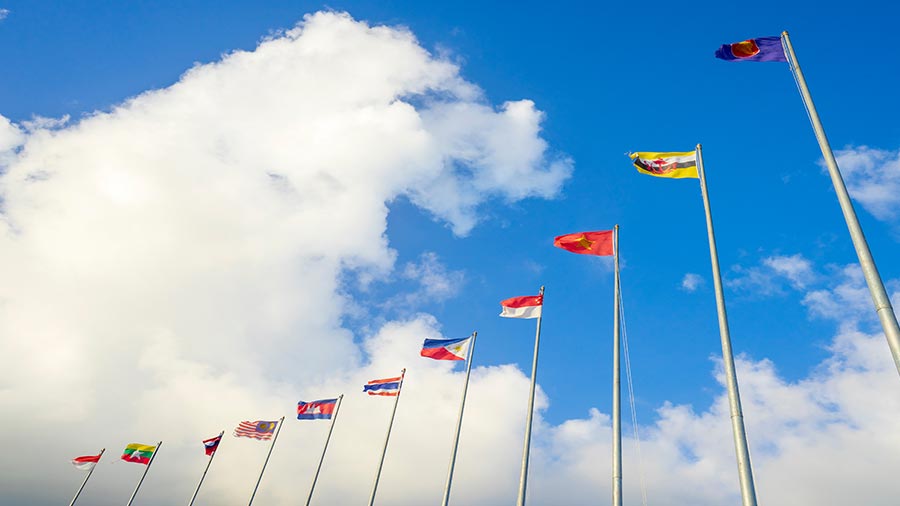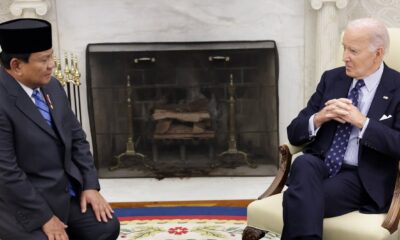China
View from The Hill: China-Australia relations head back to room temperature, with Albanese’s November visit

Australia’s Prime Minister Anthony Albanese will visit China from November 4-7, engaging in discussions with Xi Jinping to mend relations and address trade issues, particularly wine export restrictions.
The defrost in China-Australia relations started cautiously after the change of federal government last year. It then sped up, with developments culminating in the formal announcement at the weekend of the date for the much-anticipated visit by Anthony Albanese.
The bilateral relationship is fast heading back to room temperature.
The PM will visit from November 4 to 7. He’ll have talks with President Xi Jinping and Premier Li Qiang, and he’ll also attend the China International Import Expo in Shanghai.
The last days of preparation have seen major steps. First came the release of Australian journalist Cheng Lei, detained in China for three years (but writer Yang Hengjun is still there). This was followed at the weekend by the expected breakthrough on China’s restrictions on Australian wine, which prompted Australia to commence action at the WTO in 2021.
China will review, over five months, its duties on the wine; Australia will suspend its WTO action. A statement from Albanese said that “if the duties are not removed at the end of the review, Australia will resume the dispute in the WTO. We are confident of a successful outcome.”
Breaking the impasse on wine is a big deal for producers. Before the duties, China was Australia’s largest wine export market.
The lack of access to China has been devastating for many in the industry, with exports to that country falling from $1.1 billion in 2019 to $16 million in 2022. Unlike some commodities that China hit, for which alternative markets were found, wine producers have had trouble selling elsewhere.
Overall, China is our largest trading partner, representing nearly a third of our total trade. At their height China’s trade restrictions on Australia amounted to some $20 billion. They are down to about $2 billion.
Albanese’s trip will come 50 years after then PM Gough’
Whitlam’s historic visit, which was the first by an Australian prime minister.
Whitlam told a banquet in Peking on October 31, 1973: “In China today we see a great modernising force, capable of exerting profound influence in the world. Close co-operation and association between our two peoples is both natural and beneficial.”
The Whitlam trip “laid the ground work for the diplomatic, economic and cultural ties that continue to benefit our countries today,” Albanese said on Sunday.
Over the decades the relationship has, for Australia, been enormously important economically, but at times very rocky. Albanese’s visit will be the first by an Australian prime minister since Malcolm Turnbull’s in 2016.
An already downward spiral in relations, driven by various issues, worsened dramatically when Australia led international pressure for an inquiry into the origins and early handling of COVID, which began in Wuhan.
The bilateral thaw has been considerably driven by China’s perception of its wider foreign policy interests, with last year’s change of government greatly facilitating the recalibration.
But Albanese and Foreign Minister Penny Wong have remained cautious, against the background of China-United States tensions, the Taiwan issue, China’s courting of small Pacific countries, and the speed with things can change. They are keen to say the government will disagree with China where it must and always act in Australia’s national interest.
Meanwhile Mike Burgess, head of ASIO, has called fresh attention to China’s unrelenting spying activities, last week revealing an attempt to “infiltrate a prestigious Australian research institution”.
Among the topics for discussion during Albanese’s visit will be co-operation in economic areas, climate change and people-to-people links.
Albanese will be accompanied by Trade Minister Don Farrell, who has done much of the detailed trade negotiations to unlock the restrictions.
Speaking to journalists before leaving on Sunday for his visit to the United States, Albanese said, “It is important that we stabilise our relationship with China. That is in the interests of Australia and China, and it is indeed in the interests of the world, that we have stable relations, and that is what this visit will represent.”
Asked whether he would hope Xi would visit Australia, Albanese said, “we’ll have discussions about that”, noting Xi has been here a number of times.
Albanese said that in Washington this week he would be having discussions about progressing the legislation needed under the AUKUS agreement.
He’ll also be canvassing the potential benefits for Australia from the US Inflation Reduction Act. Among its objectives, this act seeks to drive clean energy. “As we move to a clean energy global economy, Australia is in a strong position to benefit because of the critical minerals that we have,” Albanese said.
The Prime Minister will be given a state dinner. This is the ninth time he has met President Biden, formally or informally, since becoming PM.
This article is republished from The Conversation under a Creative Commons license. Read the original article.
Business
Gordonstoun Severs Connections with Business Led by Individual Accused of Espionage for China

Gordonstoun school severed ties with Hampton Group over espionage allegations against chairman Yang Tengbo. He denies involvement and claims to be a victim of political tensions between the UK and China.
Allegations Lead to School’s Decision
Gordonstoun School in Moray has cut ties with Hampton Group International after serious allegations surfaced regarding its chairman, Yang Tengbo, who is accused of being a spy for the Chinese government. Known by the alias "H6," Mr. Tengbo was involved in a deal that aimed to establish five new schools in China affiliated with Gordonstoun. However, the recent allegations compelled the school to terminate their agreement.
Public Denial and Legal Action
In response to the spying claims, Mr. Tengbo publicly revealed his identity, asserting that he has committed no wrongdoing. A close associate of Prince Andrew and a former Gordonstoun student himself, Mr. Tengbo has strenuously denied the accusations, stating that he is a target of the escalating tensions between the UK and China. He has claimed that his mistreatment is politically motivated.
Immigration Challenges and Legal Responses
Yang Tengbo, also known as Chris Yang, has faced additional challenges regarding his immigration status in the UK. After losing an appeal against a ban enacted last year, he reiterated his innocence, condemning media speculation while emphasizing his commitment to clear his name. Gordonstoun, on its part, stated its inability to divulge further details due to legal constraints.
Source : Gordonstoun cuts ties with business chaired by man accused of spying for China
Business
China Dismantles Prominent Uyghur Business Landmark in Xinjiang – Shia Waves

The Chinese government demolished the Rebiya Kadeer Trade Center in Xinjiang, affecting Uyghur culture and commerce, prompting criticism from activists amid concerns over cultural erasure and human rights violations.
Demolition of a Cultural Landmark
The Chinese government recently demolished the Rebiya Kadeer Trade Center in Urumqi, Xinjiang, a vital hub for Uyghur culture and commerce, as reported by VOA. This center, once inhabited by more than 800 predominantly Uyghur-owned businesses, has been deserted since 2009. Authorities forcibly ordered local business owners to vacate the premises before proceeding with the demolition, which took place without any public notice.
Condemnation from Activists
Uyghur rights activists have condemned this demolition, perceiving it as part of China’s broader strategy to undermine Uyghur identity and heritage. The event has sparked heightened international concern regarding China’s policies in Xinjiang, which have been characterized by allegations of mass detentions and cultural suppression, prompting claims of crimes against humanity.
Rebiya Kadeer’s Response
Rebiya Kadeer, the center’s namesake and a notable Uyghur rights advocate, criticized the demolition as a deliberate attempt to erase her legacy. Kadeer, who has been living in exile in the U.S. since her release from imprisonment in 2005, continues to advocate for Uyghur rights. She has expressed that her family members have suffered persecution due to her activism, while the Chinese government has yet to comment on the legal ramifications of the demolition.
Source : China Demolishes Uyghur Business Landmark in Xinjiang – Shia Waves
China
China Expands Nationwide Private Pension Scheme After Two-Year Pilot Program

China’s private pension scheme, previously piloted in 36 cities, will roll out nationwide on December 15, 2024, enabling workers to open tax-deferred accounts. The initiative aims to enhance retirement savings, address aging population challenges, and stimulate financial sector growth.
After a two-year pilot program, China has officially expanded its private pension scheme nationwide. Starting December 15, 2024, workers covered by urban employee basic pension insurance or urban-rural resident basic pension insurance across the country can participate in this supplementary pension scheme. This nationwide rollout represents a significant milestone in China’s efforts to build a comprehensive pension system, addressing the challenges of a rapidly aging population.
On December 12, 2024, the Ministry of Human Resources and Social Security, together with four other departments including the Ministry of Finance, the State Taxation Administration, the Financial Regulatory Administration, and the China Securities Regulatory Commission, announced the nationwide implementation of China’s private pension scheme effective December 15, 2024. The initiative extends eligibility to all workers enrolled in urban employee basic pension insurance or urban-rural resident basic pension insurance.
A notable development is the expansion of tax incentives for private pensions, previously limited to pilot cities, to a national scale. Participants can now enjoy these benefits across China, with government agencies collaborating to ensure seamless implementation and to encourage broad participation through these enhanced incentives.
China first introduced its private pension scheme in November 2022 as a pilot program covering 36 cities and regions, including major hubs like Beijing, Shanghai, Guangzhou, Xi’an, and Chengdu. Under the program, individuals were allowed to open tax-deferred private pension accounts, contributing up to RMB 12,000 (approximately $1,654) annually to invest in a range of retirement products such as bank deposits, mutual funds, commercial pension insurance, and wealth management products.
Read more about China’s private pension pilot program launched two years ago: China Officially Launches New Private Pension Scheme – Who Can Take Part?
The nationwide implementation underscores the Chinese government’s commitment to addressing demographic challenges and promoting economic resilience. By providing tax advantages and expanding access, the scheme aims to incentivize long-term savings and foster greater participation in personal retirement planning.
The reform is expected to catalyze growth in China’s financial and insurance sectors while offering individuals a reliable mechanism to enhance their retirement security.
| This article was first published by China Briefing , which is produced by Dezan Shira & Associates. The firm assists foreign investors throughout Asia from offices across the world, including in in China, Hong Kong, Vietnam, Singapore, and India . Readers may write to info@dezshira.com for more support. |
Read the rest of the original article.











